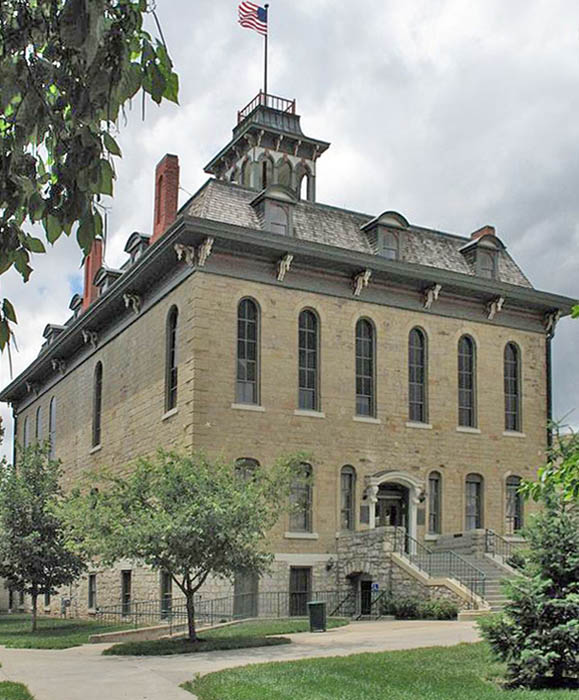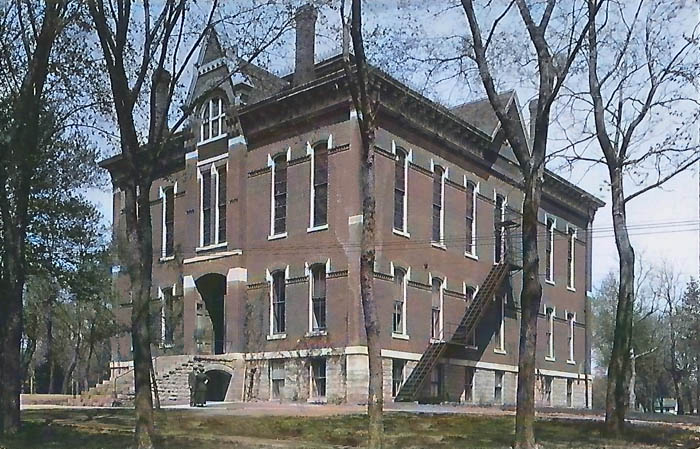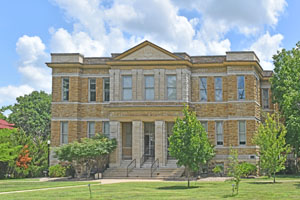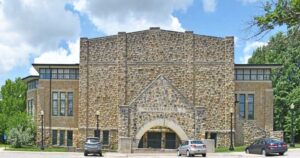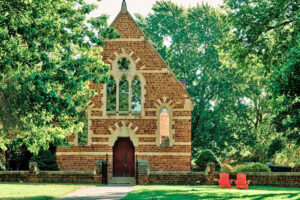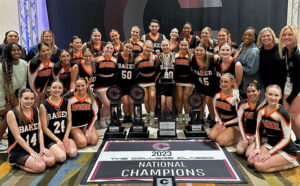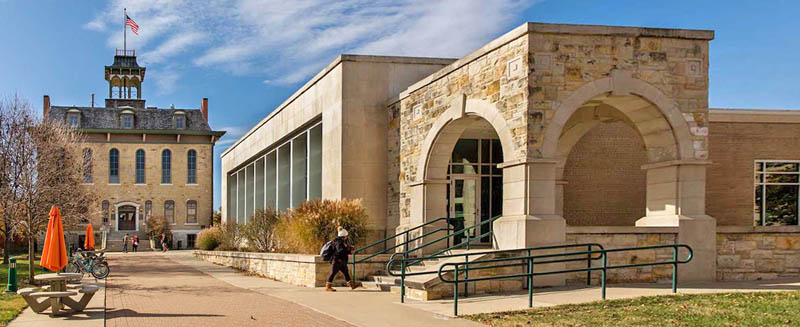
Baker University, Baldwin City, Kansas.
Rich in tradition and history, Baker University is a private university in Baldwin City, Kansas. Affiliated with the United Methodist Church, it was founded in 1858 along the Santa Fe Trail and was the first four-year university in Kansas.
Comprising four schools, it includes the College of Arts and Sciences and the undergraduate programs in the School of Education on the campus in Baldwin City. The School of Professional and Graduate Studies, along with its graduate branch of the School of Education, serves nontraditional students on campuses in Overland Park, Kansas, and online. The School of Nursing, which is operated in partnership with Stormont Vail Health in Topeka, offers a Bachelor of Science in Nursing and an online Master of Science in Nursing. Enrollment in all four schools has grown to a student population exceeding 4,000, with approximately 900 students on the Baldwin City campus.
In the fall of 1856, the Kansas and Nebraska Annual Conference of the Methodist Episcopal Church held its first session in a tent at Lawrence, Kansas. The Methodists’ interest in education was evident in the report of the committee on education, which stated that “the Kansas and Nebraska conference should avail itself, through its members, of the earliest opportunities to secure favorable sites for seminaries of learning or universities under our immediate management and control.”
In March 1857, an educational convention of the Methodist Episcopal Church was held at Palmyra, 15 miles south of Lawrence on the Santa Fe Trail. At this meeting, a school was located at Palmyra, and the name Baker University was chosen in honor of Bishop Osman C. Baker, a bishop and biblical scholar who presided over the first session of the Kansas and Nebraska annual conference. At this time, the Kansas Educational Association of the Methodist Episcopal Church was organized.
More than a dozen energetic men met at Henry Barricklow’s home north of Palmyra on April 17, 1857, and deliberated as to a suitable site for the college.
On February 3, 1858, the school obtained a charter from the territorial legislature, granting the privilege of establishing an educational institution at or near the town of Palmyra, now known as Baldwin. On February 12, 1858, the institution was chartered under the name of Baker University. Funds were raised through local donations and contributions from donors in the East.
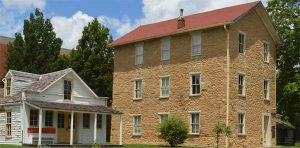
Old Castle Museum, Baldwin, Kansas, courtesy Baker University.
Construction of a stone building for the university commenced immediately and was ready for occupancy the following autumn. When the first day of school was announced for November 22, 1858, 20 students enrolled. At that time, Rush Cunningham was principal, and Werter Renick Davis was President. This building is now known as the Old Castle and houses a museum.
The first meeting of the board of trustees was held in Omaha, Nebraska, in April 1859, as the conference had convened there. The Methodist Church, by its representatives, passed the following resolution: “Resolved that this conference pledge its best efforts to build up and sustain Baker University as the one great university in Kansas.”
The drought of 1860 and the Civil War slowed the school’s progress but did not halt it completely. The first catalog was published for the year 1862-63. In 1863-64, the increase in enrollment created a demand for a new building, and an agent went east to collect funds.
Greek life at Baker University began in 1865. Seven students founded a Phi Gamma Delta house. Additional students were initiated over the next couple of years, but the fraternity was short-lived at Baker.
In 1866, the first class of three members graduated. The institution’s growth between 1858 and 1871 was fitful and precarious, yet continuous. A library of 2,000 volumes, a scientific collection, and sufficient apparatus had been accumulated to support the school’s research.
While school was being held in the original building (Old Castle), plans were underway to construct a building on the 12-acre campus one block west of Old Castle. After several years’ delay in construction, the building was completed in 1870. The natural sandstone building, 60 by 80 feet and four stories high was called Parmenter Commons. In March 1871, the 113 students and five faculty members said farewell to Old Castle and moved to the new building. One of the building’s claims to fame is that President Abraham Lincoln donated $100 toward its construction, which was supposedly the only such donation Lincoln made. Parmenter Hall was listed in the National Register in 1977. The second floor is now the campus art gallery.
In 1873, the Kansas Conference appointed educational commissioners to investigate the university’s financial and legal status. Reports of its involved conditions raised the question of its removal. The report of the commissioners helped restore confidence, and the conference pledged itself anew to support the school and pay all outstanding indebtedness, regardless of any legal flaws in the claims. In the next few years, conference endowment funds were established, and subscriptions solicited; however, the state’s poverty led to a slight decrease in debts. Frequent changes were made in the president’s office.
The period from 1880 to 1890 marked a significant improvement in the pursuit of prosperous growth. The catalog of 1880-81 stated that in the literary department alone, the average attendance throughout the year had more than doubled that of any year for the past 12 years.
The cornerstone for Centenary Hall was laid in 1884. This new building north of Old Science was to become the center of activity. Completed in 1885, the stone and brick building measured 62 by 82 feet and was two stories above the basement. From 1885 to 1904, Centenary Hall served as the Methodist Episcopal Church. The hall and chapel could seat 1,000 people. During the week, the building was used for Baker classrooms.
With the beginning of the 1889 school year, proper and continuous work on the endowment commenced. Up to that time, little had been done to create a permanent fund. Still, from that year to 1911, the university systematically solicited and received gifts, ultimately establishing an endowment fund of $400,000.
With the betterment of financial conditions, the size and quality of the curriculum increased. Almost at the beginning, two courses of study were given—classical and scientific. These evolved into eight schools, including the summer school, which was held annually during June and July.
The government of the institution was vested in a board of trustees elected by the Kansas and South Kansas conferences of the Methodist Episcopal Church.
Dr. Charles S. Parmenter was apparently responsible for generating enthusiasm for building the first gymnasium. Starting from a small request, his idea snowballed into a stone building valued at $60,000. The cornerstone for this building was laid in 1900, and by 1901, it was completed.
The fourth building on the campus was a much-needed library. The president of the board of trustees, Nelson Case, gave a large sum of money towards the construction of a new building. Andrew Carnegie was persuaded to give $12,000, provided the college would raise $36,000. The cornerstone for the new library was laid on September 13, 1904, and the structure was completed by August 1907. By decision of the Trustees, the building was named Case Library after its most significant donor. One of the greatest gifts to be housed in the library was the collection of rare Bibles willed to Baker by Bishop William A. Quayle.
Just as the new gymnasium was getting into the swing of student activities, it caught fire on April 13, 1907, and was destroyed. Afterward, Dr. Murlin, the President, started a campaign to raise funds for a second gymnasium. Ground was broken for the new gymnasium in May 1907. The cornerstone laying took place on September 17, 1908, and the new building was named Taylor Hall in honor of the father of J.L. Taylor, who subscribed $20,000 to the building fund.
On September 24, 1911, President William Howard Taft delivered the first public pronouncement of the federal government for world peace at Taylor Hall.
Taylor Hall burned down in 1943. A campaign was started to raise $250,000 to rebuild the gymnasium. By June 1947, the basement was ready for use, and by January 1948, the entire building was ready for use. It was called Memorial Hall to honor those who had served in World War II.
Groundbreaking began for a new science building in March 1924. Previously, a campaign was started to raise $500,000 endowment, and Mr. Jacob Mulvane of Topeka, Kansas, was so inspired during the inauguration of President Fleming that he gave $100,000 for the new science building. Named for Mr. Mulvane, Mulvane Hall was dedicated during the commencement exercises on May 31, 1925.
Due to structural deficiencies, Centenary Hall was torn down in the fall of 1964.
When Taylor Hall was renovated in 1972 through a generous grant from the Mabee Foundation, it was given its current name of Mabee Memorial Hall.
The School of Professional and Graduate Studies was formed in 1988.
The School of Nursing was formed in 1991 when Baker entered into a cooperative agreement with Stormont-Vail Health in Topeka.
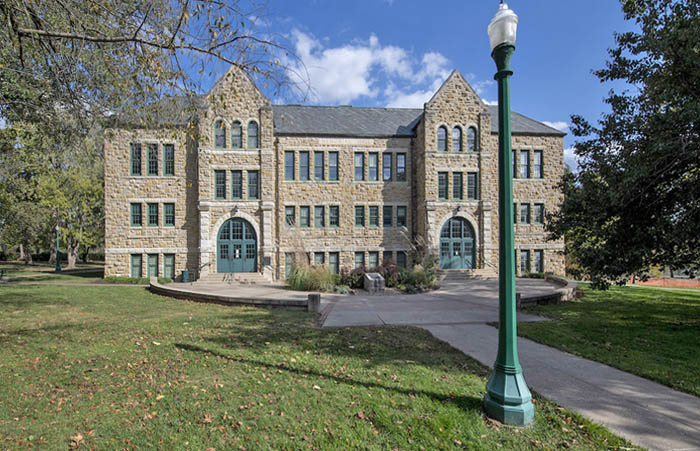
Mabee Memorial Hall at Baker University in Baldwin City, Kansas.
In 1995, Mabee Memorial Hall was completely renovated and houses the departments of Business, Psychology, and Sociology. It is also home to the athletic director, physical education department, and several coaches on the second floor. Baker’s old gymnasium is still used on the hall’s second floor. On the ground floor are the Shore Weight Room and the University’s fitness center.
The Clarice L. Osborne Memorial Chapel was moved stone by stone from the village of Sproxton, England, to serve as the spiritual center of the university. The chapel was dedicated at Baker in 1996 by Lady Margaret Thatcher, the former British Prime Minister, whose father had preached in the building.
The School of Education was formed in 2005.
In October 2011, Baker University officials broke ground on a $3 million, 9,000-square-foot addition to Mulvane Hall. The four-level addition was part of the $10.3 million Mulvane Transformation Project that also included an external face-lift and a total internal overhaul of the existing building. Once it was completed, the building was called the Ivan L. Boyd Center for Collaborative Science Education.
The Baker athletic teams are called the Wildcats. Baker competes in 26 intercollegiate varsity sports: Men’s sports include baseball, basketball, bowling, cross country, football, golf, soccer, tennis, track & field, and wrestling; while women’s sports include basketball, bowling, cross country, golf, soccer, softball, tennis, track & field, volleyball, flag football and wrestling; and co-ed sports includes cheerleading, dance, and eSports.
Baker has only one official color: cadmium orange.
Baker University has three residence halls and two apartment buildings for students living on campus. Gessner Hall provides suite-style living arrangements for 152 male residents. It was built in 1966, and the building underwent renovation in 2012. Irwin Hall provides suite-style living arrangements for 150 female residents. The newest residence hall is the New Living Center, which houses 190 students in 48 rooms. The New Living Center is the largest on campus, with three stories and six wings totaling 52,000 square feet.
Today, there are several fraternities and sororities on campus.
Baker University is a premier private institution with a tradition of academic excellence and student engagement in a respectful, inviting, and values-based learning community. It boasts an excellent student-to-teacher ratio and small class sizes. The university is consistently recognized for its excellence both in and out of the classroom.
In fact, the U.S. Department of Education recently revealed that Baker graduates earn higher average salaries than their peers from other universities in Kansas, and Baker is the university in Kansas most likely to secure a job for its graduates.
©Kathy Alexander – Baker University Alumni/Legends of Kansas, July 2025.
Also, See:
Kansas Colleges & Universities
Santa Fe Trail in Douglas County
Sources:
Baker University
Baldwin City Centennial: A Commemorative Edition of Baldwin City and the Area, October 1970.
Blackmar, Frank W.; Kansas: A Cyclopedia of State History, Vol I; Standard Publishing
Travel Kansas
Wikipedia

